|
It's a beautiful Sunday morning here in the upper Midwest and a perfect time for Project 40 to begin its 7-day auction on Bring-A-Trailer. Click here to view the auction and please pass the word.
1 Comment
As my 1993 VFR750 awaits its freshly painted wheels, clutch cover and newly upholstered seat to be ready, I've dipped my toe into Project 41, a blue/silver 1987 VFR700F2 in need of full restoration. (Below) I've already stripped the bodywork in preparation for a badly-needed bath, and next I'll remove the carburetors to begin the process of getting the engine running. The first thing I encounter isn't encouraging, as someone has made a go-fast modification to the airbox lid in the form of 50+ precisely placed holes. So, first thing on the parts list is a replacement lid. With the carbs lifted free the barn dirt shows itself in the cylinder valley. A peek into the carb bowls reveals the expected gummy varnish coating the brass jets. But everything's intact, the control linkages are free and there's no other obvious issues at this point. (click on an image to enlarge) 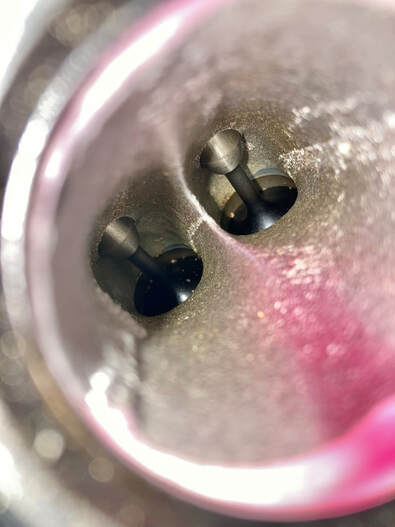 Some good news; a look into the intake passages shows the cleanest valves and guides I've ever found in a VFR engine. I wonder what the secret was to keeping those so deposit-free on this 33K-mile engine. That red streak might hold a clue — did the previous owner regularly add Marvel Mystery Oil to the gas? (Below) More bad news as I find the instrument panel to be loose on its mounts. A quick inspection revealed the cause — all three mounting points have been broken free of the housing. Fortunately, I have a spare housing if we get to that point. The sequence is familiar: Rebuild the carbs, adjust the valves, check compression, flush the coolant and change the oil. At that point we'll press the magic button to see if we have a viable project. Stay tuned. 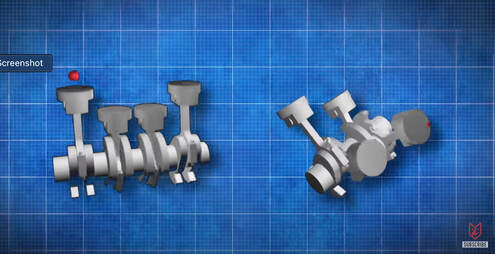 One of my favorite YouTube presenters is RyanF9, creator of the Fortnine series of motorcycle-related content. Ryan's videos are relevant and based upon science and experimentation, not simply inter-web regurgitation. As one commenter posted, "It's one thing to have a superb and intimate knowledge of engineering, but it's a gift to be able to put it across so simply and engrossingly to the layman. A paragon of peripatetic pedagogy." (whatever that means ;-) Today's video is called "The Pros and Cons of Every Motorcycle Engine Type." In it he offers his opinions on singles to inline six's — and the V4, of course. His summary? "The V4 is the best engine for a motorcycle…period. If you get a chance to own a V4, do it." (skip to 12:00 for the V4 discussion) 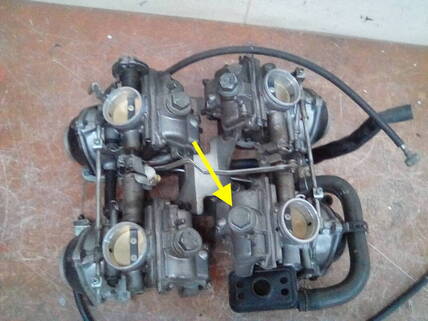 Click on image for the eBay listing Click on image for the eBay listing Located in Tochigi, Japan, here's a set of used carburetors to fit the VFR750R. The Buy-It-Now price of $2999.95 includes shipping to the U.S. For such an expensive item, the seller is amazingly sparse with his description: “{Excellent+++++}Pre-owned, There are a few scratches by use.” While looking very similar externally to the street Interceptor carbs, one thing that caught my eye are the huge bolts in the middle of the float bowls (arrow). Quick jet access? 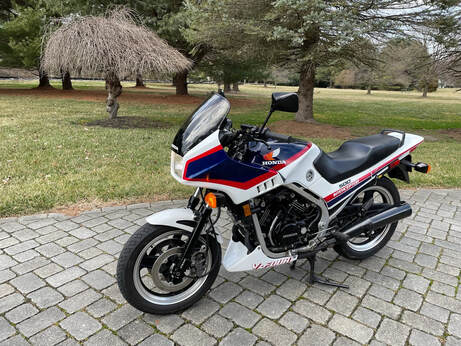 Click on image for the BaT link Click on image for the BaT link What: 1984 VF500F Interceptor Why: Low-mileage survivor Where: Wilmington, Delaware Price: No reserve auction UPDATE: SOLD for $6800 VF500 fans will be very interested in this 1700-mile original-condition Interceptor. Judging by the photos, this appears to be the real deal, with just enough wear indicators to indicate complete originality, as represented. Notably, the irreplaceable black chrome mufflers look to be in excellent condition. Maintenance has been brought up-to-date with carburetor, fork, brake and shock service performed. Bidding hit $4000 on day one, so this has plenty of room to move. Happy times ahead for the lucky high bidder. 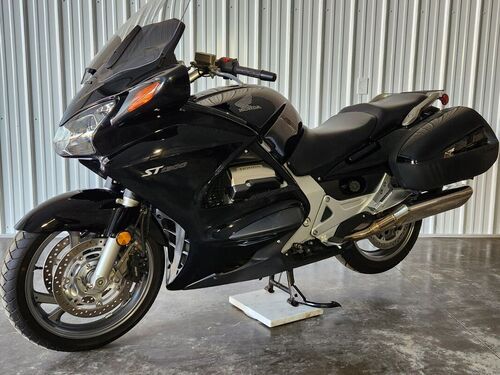 I don't know how or why a high-end sport touring motorbike is purchased new, then left parked for 13 years. But that's what has happened to this black beauty — a V4-powered 2010 ST1300 with only 6 miles. Last month it sold via eBay auction for $15,000 after 12 bids. There's no explanation for the original owner's lack of use, but our seller states that he commissioned a "certified Honda mechanic and asked him to thoroughly go over the bike and be sure it is in perfect running order." No further word on what work was accomplished but the photos show what appears to be a perfectly-kept time capsule, resplendent in Graphite Black with silver wheels. They're still out there, guys…. 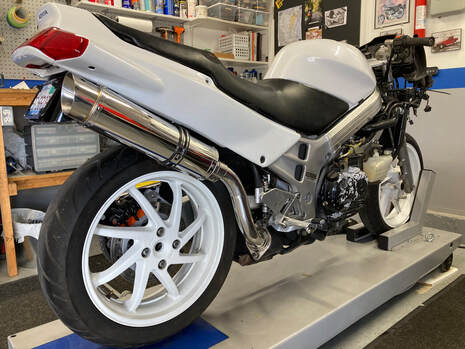 Project 39, a 1993 VFR750, was recently treated to fitting of the tail cowl, seat and fuel tank, so it could be said I'm progressing from rear to front on this project. The tank and cowl were recently repainted, matched to the original Pearl Crystal White — the tank was sourced from a '92 so it had to be changed from its original black, but the tail cowl had extensive damage to the right side panel, which required lots of plastic repair and final paint prep. Sharp-eyed 3d-gen owners will also note that the rear brake reservoir peephole has disappeared. I did this just for aesthetics, accomplished by welding in a small patch cut from scrap ABS plastic and finished with the rest of the panel. With that beautiful new paint, the tail light and turn signals would also need freshening from decades of damage in the Florida sun. Note the wooden brace attached at the mid-point of the fairing. The brace allows me to handle the 3-piece fairing without fear of damaging the fragile assembly. The process of bringing these pieces back to their showroom sparkle begins with degreasing, followed by wet-sanding with 400-grit, progressing to 5000. I finish with machine buffing, using a medium, then fine compound. The difference is amazing. The turn signals each took about 20 minutes but the tail light put up a fight — at some point in the past someone had put deep scratches in the plastic, which I laboriously sanded smooth.
The bottom photo shows the finished fairing. I think this effort really paid off. I also trimmed the OEM fender, eliminating the bulky license light and lower reflector (I don't ride my VFRs at night). Finally, the fender was painted gloss black. Yesterday I removed the forks, triple clamps and handlebars for a complete front end mechanical and cosmetic refurbishment. More on that later. The seat is also off to Marty, my master upholsterer. 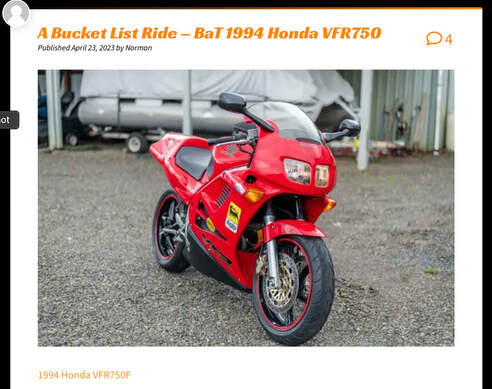 Earlier this week RareSportBikesForSale posted about a 1994 VFR750 for sale on Bring-A-Trailer. What caught my attention was contributor Norm's write-up on the VFR in general. There's a couple of details askew in his account, but overall he does a good job of capturing a bit of the VFR's appeal. UPDATE: This VFR sold for $7000 "These VFRs just look better and better every time I look at them. Age is making these finer and finer and I always say Honda has left some of the most remarkable bikes and engines in its wake through time. There’s just something so romantic about winding out a gear-driven V4 and feeling the power come through at 10k RPMs through a windy, empty road. Ten to 20 years from now when rocketpods are the new school buses and time travel capsules are the new rocketpods, bikes like the VFR are going to be the artifacts that best recall what exceptional and classic mechanical engineering looked like.
From an engineering standpoint, the VFR had been considered a success ever since it came out. Executing a single-sided swingarm and V4 in a streetable platform is no joke but Honda got it pretty right when the VFR first came out in 1990. In 1994, they came with some upgrades to further fine tune the VFR as an excellent multi-purpose street machine. In regards to the powerplant, Honda had tinkered with the cam timing, reshaped ports, and switched to a 34mm carb setup. They also opted to go with a 4-1 exhaust system that shed 5 pounds. Shedding weight was really the name of the game with the 1994 VFR as the exhaust combined with other various improvements resulted in a 20 lb weight loss. Weight is a sport bike’s worst enemy so the leaner profile certainly earned the VFR more credibility on the road and as a true swiss-army knife." 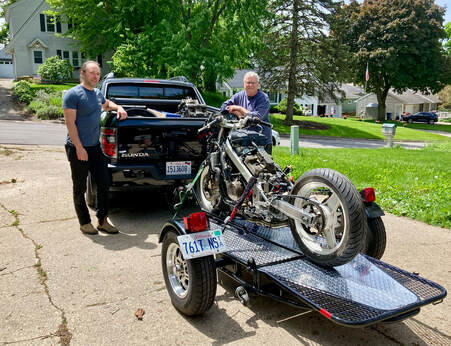 With all the finishing details attended to, Project 40, a 1986 VFR700F, is finished. I acquired this project in Michigan in April, 2022 from a seller who had begun his own project, but lost steam. The bike had a transplanted 750cc engine installed but much of the rest was in boxes, which filled the bed of my truck. After much consideration, I decided to take the bike back to its 700 roots and swapped back the original engine (which was included in the sale). Also included were "750" side fairings, which I decided to keep on the bike. Most of the bodywork was in excellent original condition, needing only cosmetic attention, with the exception of a faded and dinged fuel tank and some plastic cracks to the large right side fairing, which were both repaired and professionally repainted. The mirrors and front turn signal housings were also repainted, while reproduction LED CBR/VFR 400 rear signals were sourced to tidy up the rear. Other modifications include a set of restored Kerker dual slip-on mufflers with polished header pipes, a reproduction windscreen and 19mm bar risers from MOTO-CNC. The rear shock is an OEM unit from a low-mileage bike while the rebuilt forks have an extra 1/2" preload spacer installed. Here's a summary of this VFR:
|
THE SHOP BLOG
|
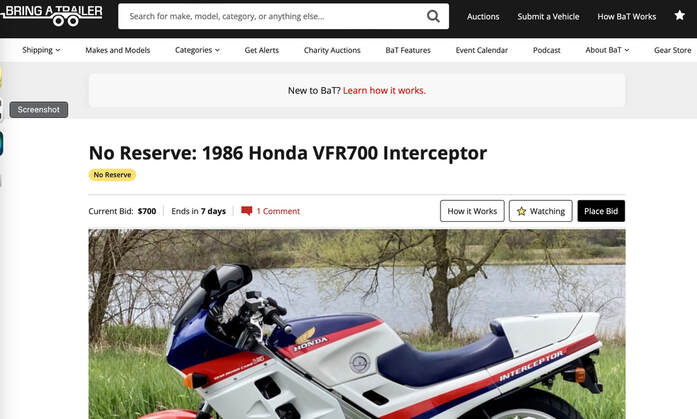
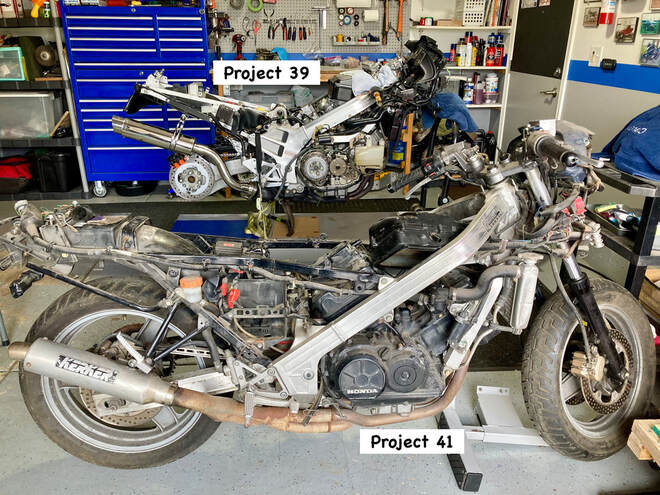



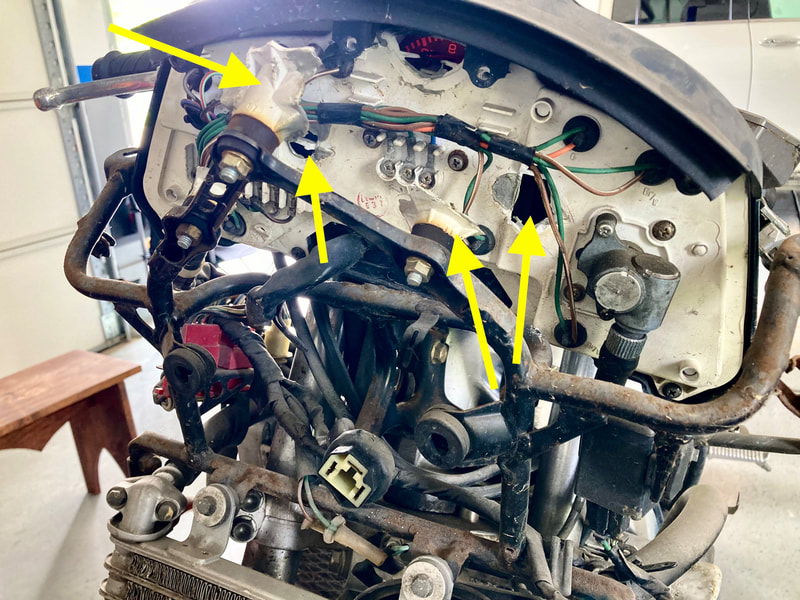



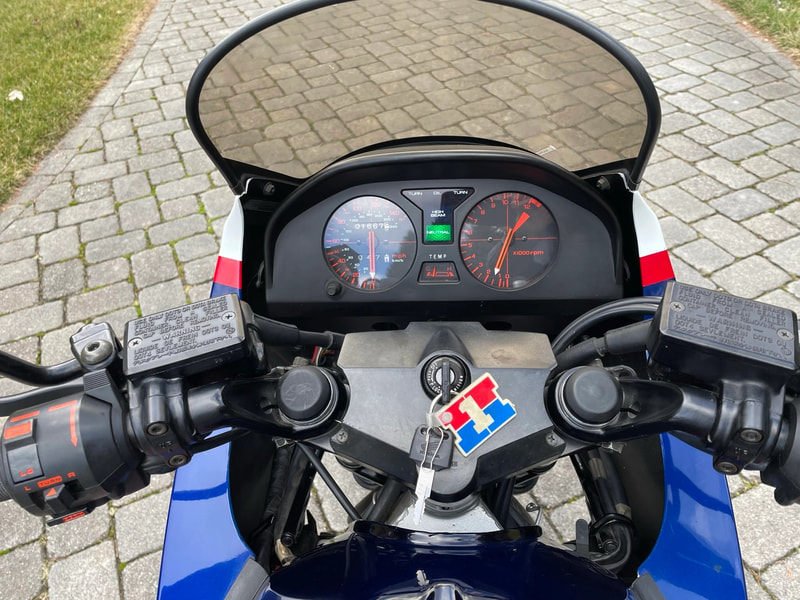

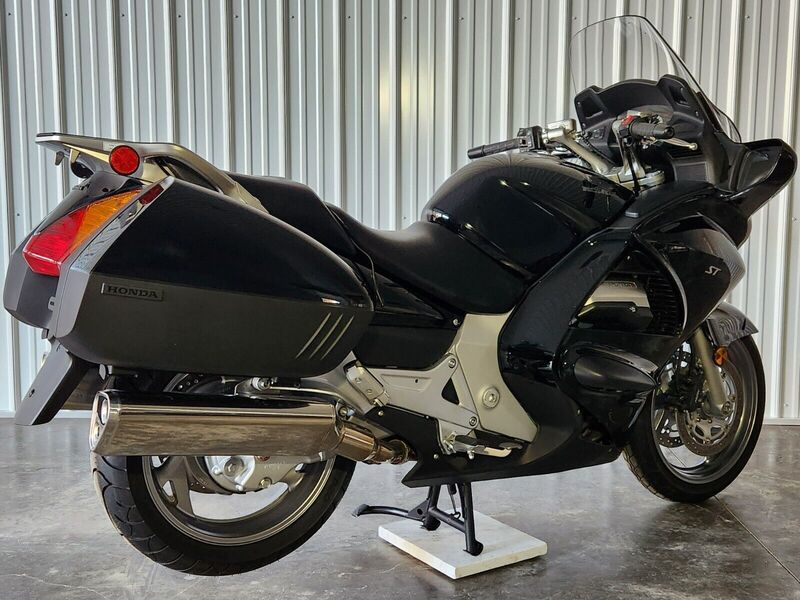

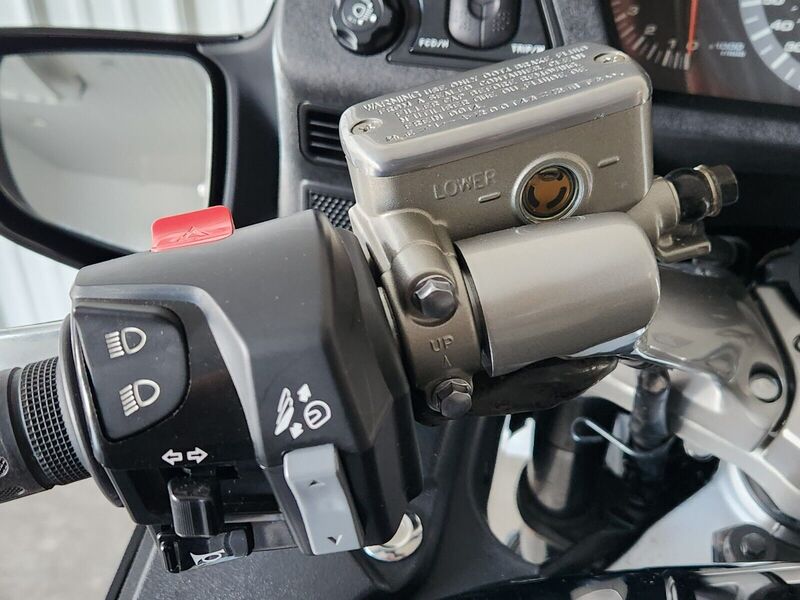

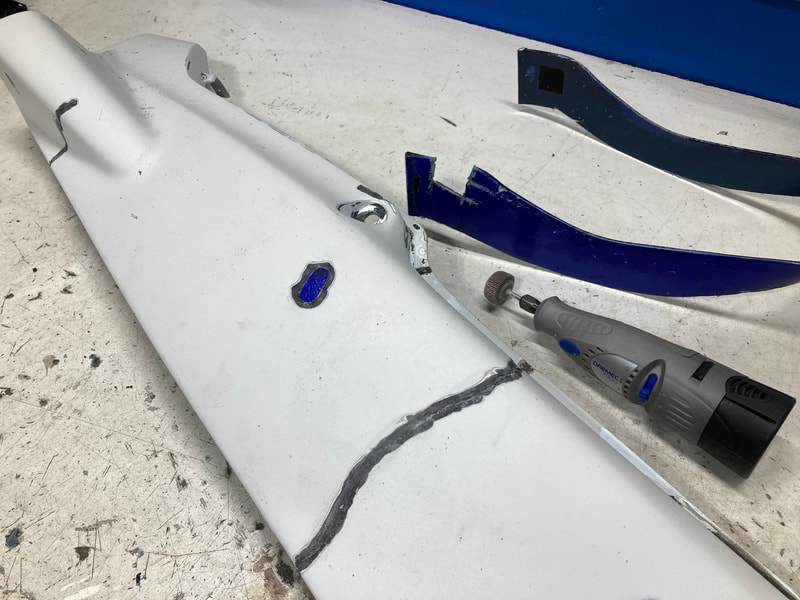
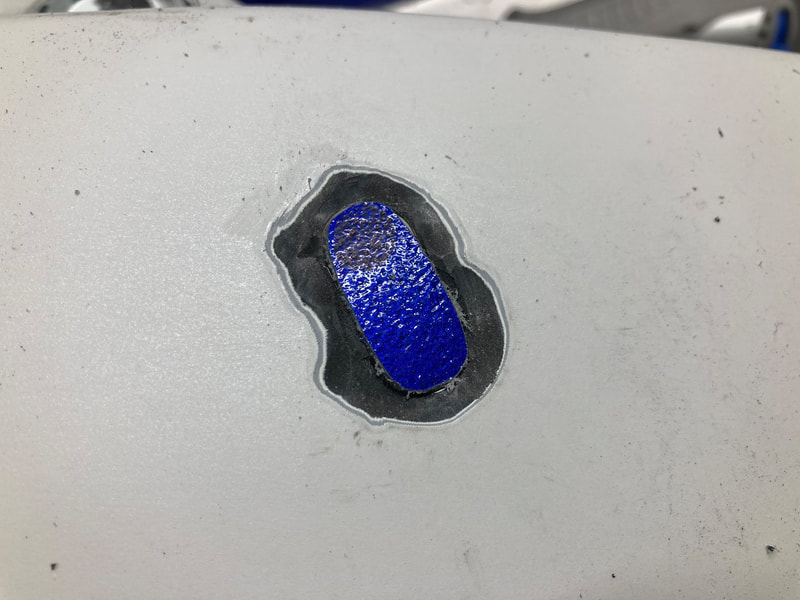
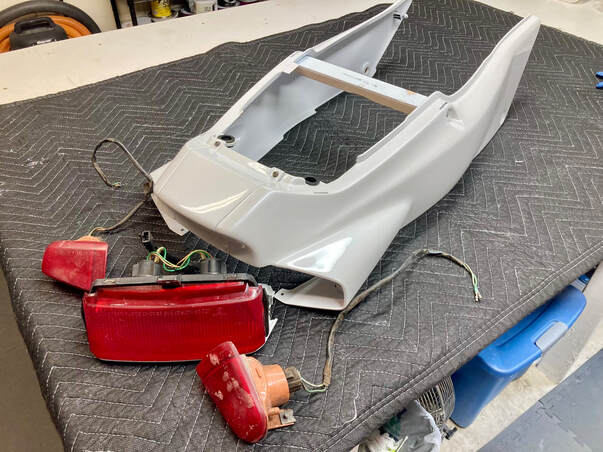
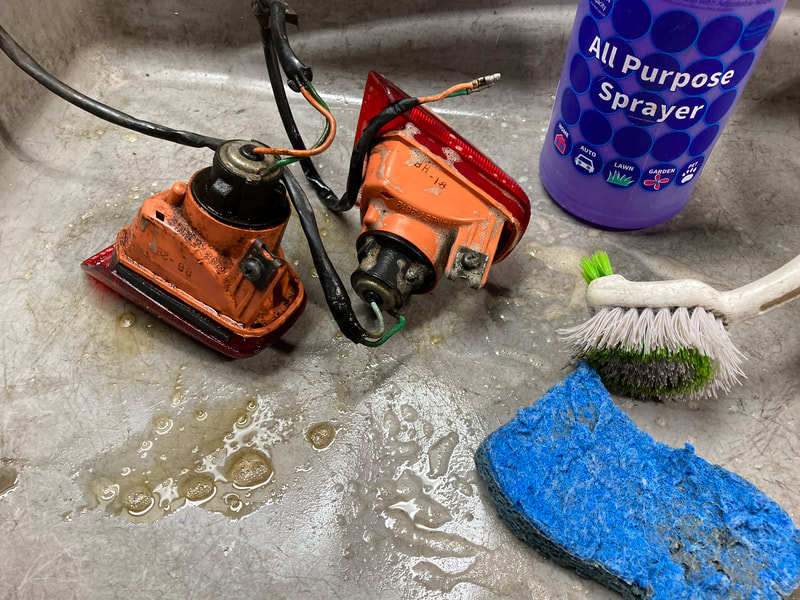

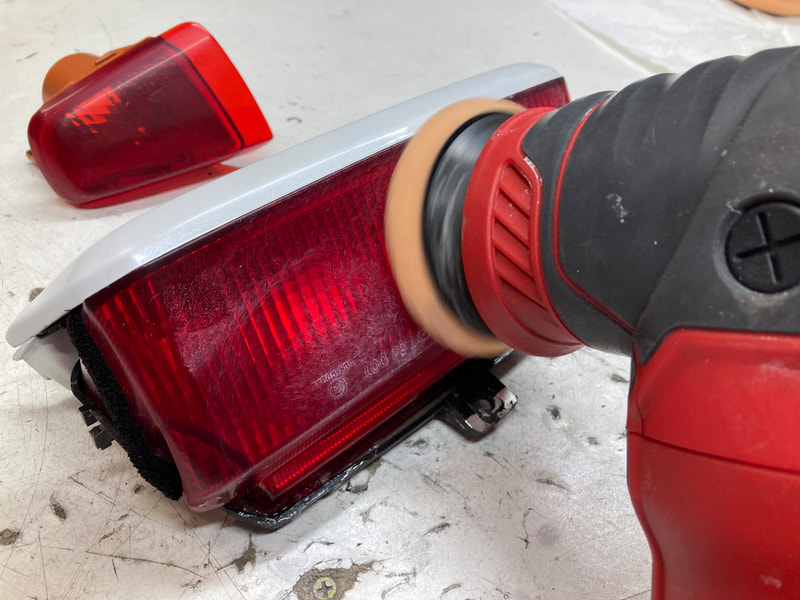

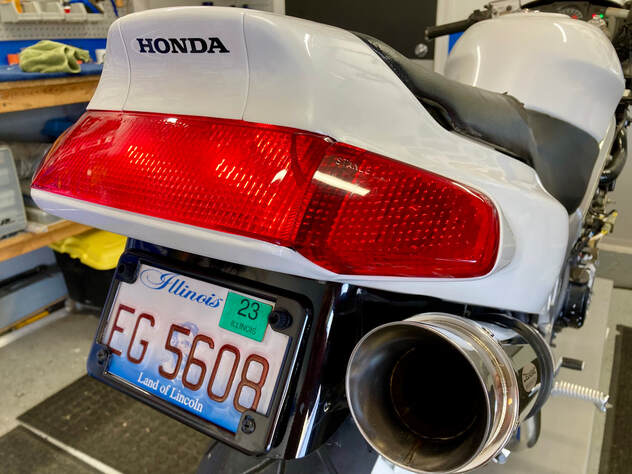
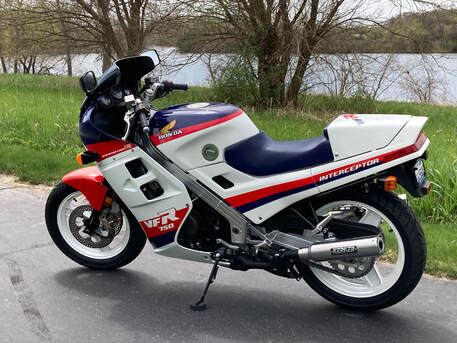
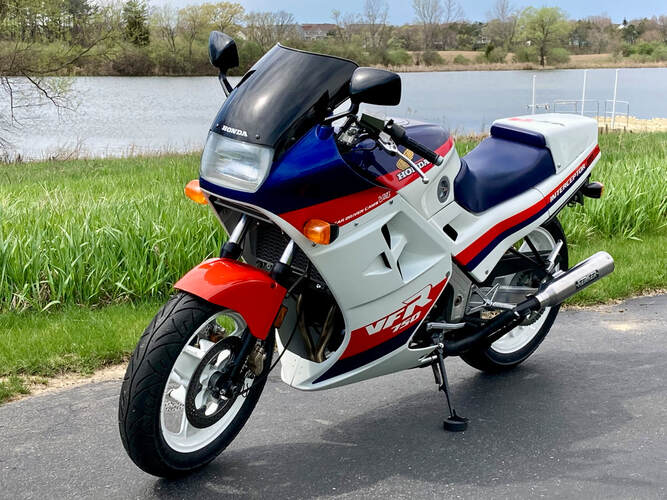






 RSS Feed
RSS Feed